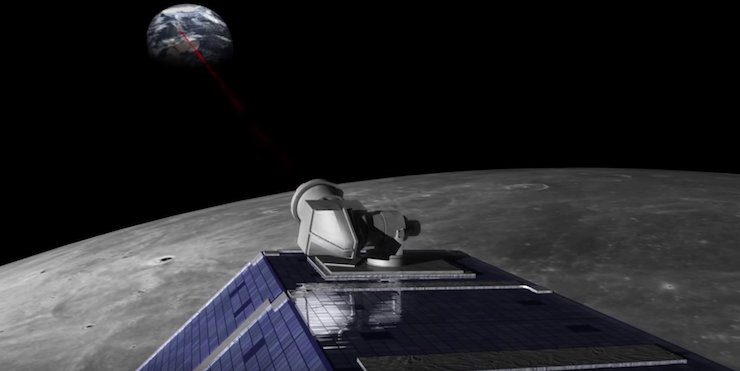As NASA looks more towards exploring our solar system (and beyond) and sending astronauts to Mars, they’re also rethinking the way we will communicate with spacecraft, satellites, and astronauts.
Currently, NASA uses radio-frequency (RF) signals to communicate with space. These radio waves are a reliable, tested technology, but they have their downsides for deep space. First, signals degrade en route to the Earth; by the time we receive them, the quality has eroded. Second, they require giant radio receivers on the ground to receive these transmissions. Third, the quality of the signal severely affects data transfer speeds and bandwith.
This is why NASA is studying new communication technology, and it may have found it with the Laser Communication Relay Demonstration (LCRD). This new technology, still in the testing phases, uses lasers for communication. Currently radio transmissions only provide a limited bandwith for spacecraft to send data, which is why they must do so in very small packets. LCRD technology offers the equivalent of high speed Internet in space.
For example, when the New Horizons spacecraft was surveying Pluto, the maximum data it could send via RF signal was the equivalent of 10 high-resolution images. And it took us two weeks to receive these. The reason is that Pluto is incredibly far away from us, and thus New Horizons’ radio signal was extremely weak. That low signal limited the amount of data that could be sent—resulting in a data rate approximately roughly 1 kb/s. LCRD offers data rates that are 10 to 100 times better, and would have drastically increased the speed of transmission even at these larger distances.
Another benefit? Laser communications (which consists of data encoded onto a beam of light) don’t require nearly the square footage for transfer and capture. The communications equipment necessary to receive laser-based signals would be much smaller than the giant array of radio telescopes necessary to receive current RF signals.
But what’s even more crucial is that these laser signals also require less equipment on the spacecraft to send, which is always a good (and necessary) thing, as we’re constantly looking for ways to cut down weight on spacecraft. The more weight a spacecraft has, the more fuel is required to propel it to higher speeds—and fuel itself is heavy. If we want a spacecraft to potentially achieve very high speeds, we have to cut down its weight any and every way we can. RF communications equipment can be bulky, so the more compact laser-based communications technology could allow for lighter, faster ships.
NASA will launch the LCRD into orbit in the summer of 2019, and are looking to test the system’s reliability and longevity. In 2021, scientists and engineers will install a gigabit uplink module on the International Space Station, allowing them to test data transfer and degradation rates locally, before risking new technology on spacecraft that will be inaccessible after launch.
High speed Internet in space! Who’d have thought?
Top image from simulation of NASA’s Lunar Laser Communication Demonstration; Credit: NASA’s Goddard Space Flight Center (2013)










